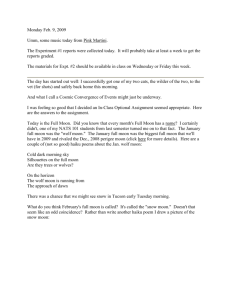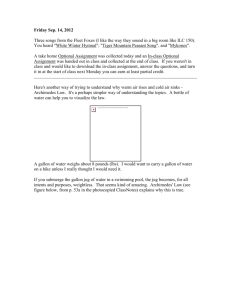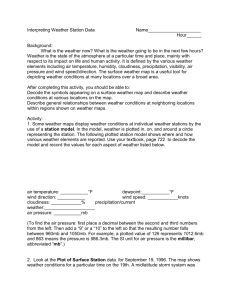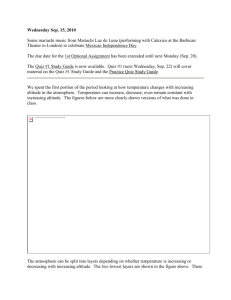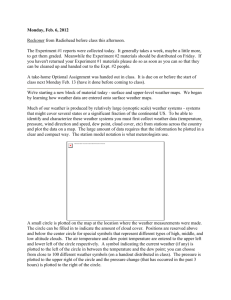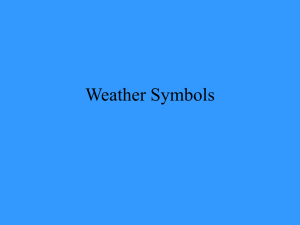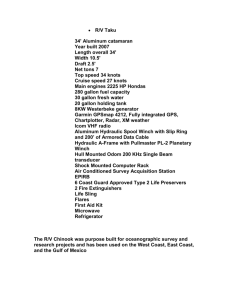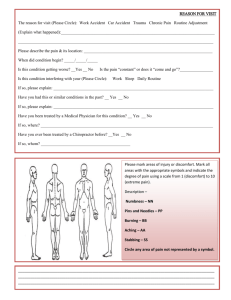Here
advertisement
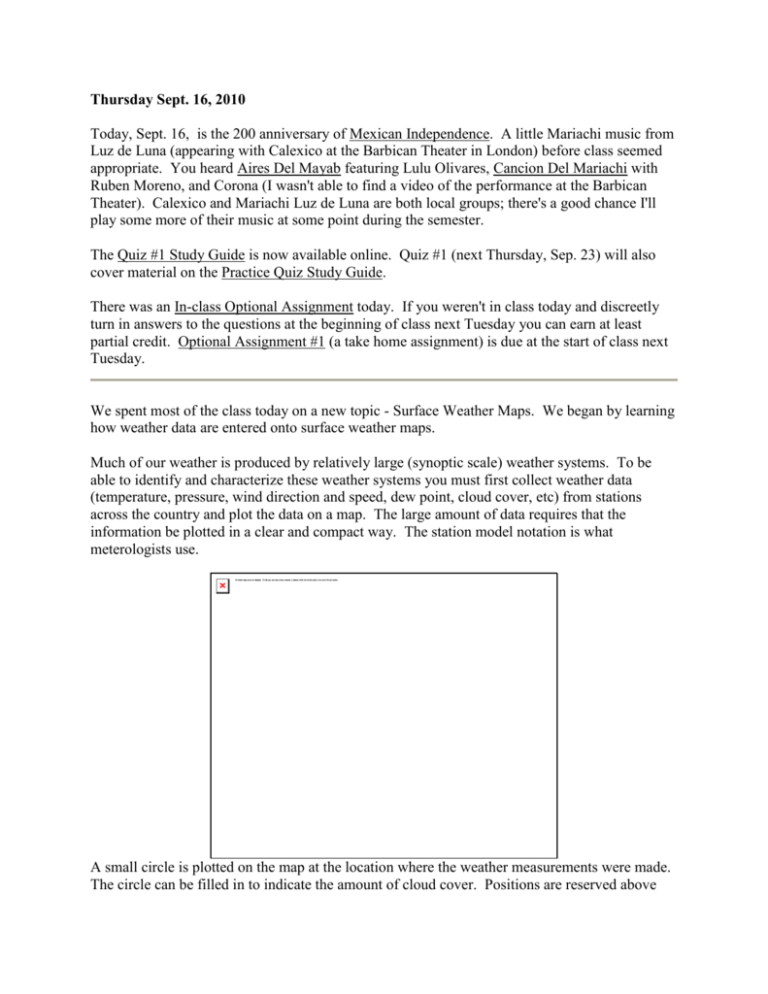
Thursday Sept. 16, 2010 Today, Sept. 16, is the 200 anniversary of Mexican Independence. A little Mariachi music from Luz de Luna (appearing with Calexico at the Barbican Theater in London) before class seemed appropriate. You heard Aires Del Mayab featuring Lulu Olivares, Cancion Del Mariachi with Ruben Moreno, and Corona (I wasn't able to find a video of the performance at the Barbican Theater). Calexico and Mariachi Luz de Luna are both local groups; there's a good chance I'll play some more of their music at some point during the semester. The Quiz #1 Study Guide is now available online. Quiz #1 (next Thursday, Sep. 23) will also cover material on the Practice Quiz Study Guide. There was an In-class Optional Assignment today. If you weren't in class today and discreetly turn in answers to the questions at the beginning of class next Tuesday you can earn at least partial credit. Optional Assignment #1 (a take home assignment) is due at the start of class next Tuesday. We spent most of the class today on a new topic - Surface Weather Maps. We began by learning how weather data are entered onto surface weather maps. Much of our weather is produced by relatively large (synoptic scale) weather systems. To be able to identify and characterize these weather systems you must first collect weather data (temperature, pressure, wind direction and speed, dew point, cloud cover, etc) from stations across the country and plot the data on a map. The large amount of data requires that the information be plotted in a clear and compact way. The station model notation is what meterologists use. A small circle is plotted on the map at the location where the weather measurements were made. The circle can be filled in to indicate the amount of cloud cover. Positions are reserved above and below the center circle for special symbols that represent different types of high, middle, and low altitude clouds. The air temperature and dew point temperature are entered to the upper left and lower left of the circle respectively. A symbol indicating the current weather (if any) is plotted to the left of the circle in between the temperature and the dew point; you can choose from close to 100 different weather symbols (on a handout distributed in class). The pressure is plotted to the upper right of the circle and the pressure change (that has occurred in the past 3 hours) is plotted to the right of the circle. So we'll work through this material one step at a time (refer to p. 36 in the photocopied ClassNotes). Some of the figures below were borrowed from a previous semester or were redrawn and may differ somewhat from what was drawn in class. The center circle is filled in to indicate the portion of the sky covered with clouds (estimated to the nearest 1/8th of the sky) using the code at the top of the figure. 3/8ths of the sky is covered with clouds in the example above. Then symbols are used to identify the actual types of high, middle, and low altitude clouds (the symbols can be found on the handout to be distributed in class, click here if you didn't pick up a copy of the handout). The air temperature in this example was 64o F (this is plotted above and to the left of the center circle). The dew point temperature was 39o F and is plotted below and to the left of the center circle. The box at lower left reminds you that dew points range from the mid 20s to the mid 40s during much of the year in Tucson. Dew points rise into the upper 50s and 60s during the summer thunderstorm season (dew points are in the 70s in many parts of the country in the summer). Dew points are in the 20s, 10s, and may even drop below 0 during dry periods in Tucson. A straight line extending out from the center circle shows the wind direction. Meteorologists always give the direction the wind is coming from. In this example the winds are blowing from the NW toward the SE at a speed of 5 knots. A meteorologist would call these northwesterly winds. Small barbs at the end of the straight line give the wind speed in knots. Each long barb is worth 10 knots, the short barb is 5 knots. Knots are nautical miles per hour. One nautical mile per hour is 1.15 statute miles per hour. We won't worry about the distinction in this class, you can just pretend that one knot is the same as one mile per hour. Here are some additional wind examples: In (a) the winds are from the NE at 5 knots, in (b) from the SW at 15 knots, in (c) from the NW at 20 knots, and in (d) the winds are from the NE at 1 to 2 knots. A symbol representing the weather that is currently occurring is plotted to the left of the center circle (in between the temperature and the dew point). Some of the common weather symbols are shown. There are about 100 different weather symbols that you can choose from (these weather symbols were on the handout distributed in class, click here if you didn't get a copy of the handout) The sea level pressure is shown above and to the right of the center circle. Decoding this data is a little "trickier" because some information is missing. We'll look at this in more detail momentarily. Pressure change data (how the pressure has changed during the preceding 3 hours) is shown to the right of the center circle. You must remember to add a decimal point. Pressure changes are usually pretty small. Here are some links to surface weather maps with data plotted using the station model notation: UA Atmos. Sci. Dept. Wx page, National Weather Service Hydrometeorological Prediction Center, American Meteorological Society. Here's how you can decode the pressure data. Meteorologists hope to map out small horizontal pressure changes on surface weather maps (that produce wind and storms). Pressure changes much more quickly when moving in a vertical direction. The pressure measurements are all corrected to sea level altitude to remove the effects of altitude. If this were not done large differences in pressure at different cities at different altitudes would completely hide the smaller horizontal changes. In the example above, a station pressure value of 927.3 mb was measured in Tucson. Since Tucson is about 750 meters above sea level, a 75 mb correction is added to the station pressure (1 mb for every 10 meters of altitude). The sea level pressure estimate for Tucson is 927.3 + 75 = 1002.3 mb. This is also shown on the figure below Here are some examples of coding and decoding the pressure data. We tried to cover this in about the last 5 minutes of class which meant rushing things a little bit ( a lot actually ). So we'll review this at the start of class next Monday. To save room, the leading 9 or 10 on the sea level pressure value and the decimal point are removed before plotting the data on the map. For example the 10 and the . in 1002.3 mb would be removed; 023 would be plotted on the weather map (to the upper right of the center circle). Some additional examples are shown above. When reading pressure values off a map you must remember to add a 9 or 10 and a decimal point. For example 116 could be either 911.6 or 1011.6 mb. You pick the value that falls between 950.0 mb and 1050.0 mb (so 1011.6 mb would be the correct value, 911.6 mb would be too low). Another important piece of information on a surface map is the time the observations were collected. Time on a surface map is converted to a universally agreed upon time zone called Universal Time (or Greenwich Mean Time, or Zulu time). That is the time at 0 degrees longitude. There is a 7 hour time zone difference between Tucson (Tucson stays on Mountain Standard Time year round) and Universal Time. You must add 7 hours to the time in Tucson to obtain Universal Time. Here are some examples (not done in class) 2:45 pm MST: first convert 2:45 pm to the 24 hour clock format 2:45 + 12:00 = 14:45 MST then add the 7 hour time zone correction ---> 14:45 + 7:00 = 21:45 UT (9:45 pm in Greenwich) 9:05 am MST: add the 7 hour time zone correction ---> 9:05 + 7:00 = 16:05 UT (4:05 pm in England) 18Z: subtract the 7 hour time zone correction ---> 18:00 - 7:00 = 11:00 am MST 02Z: if we subtract the 7 hour time zone correction we will get a negative number. We will add 24:00 to 02:00 UT then subtract 7 hours 02:00 + 24:00 = 26:00 26:00 - 7:00 = 19:00 MST on the previous day 2 hours past midnight in Greenwich is 7 pm the previous day in Tucson A bunch of weather data has been plotted (using the station model notation) on a surface weather map in the figure below (p. 38 in the ClassNotes). Plotting the surface weather data on a map is just the beginning. For example you really can't tell what is causing the cloudy weather with rain (the dot symbols are rain) and drizzle (the comma symbols) in the NE portion of the map above or the rain shower along the Gulf Coast. Some additional analysis is needed. A meteorologist would usually begin by drawing some contour lines of pressure to map out the large scale pressure pattern. We will look first at contour lines of temperature, they are a little easier to understand (easier to decode the plotted data and temperature varies across the country in a fairly predictable way). Isotherms, temperature contour lines, are usually drawn at 10 F intervals. They do two things: (1) connect points on the map that all have the same temperature, and (2) separate regions that are warmer than a particular temperature from regions that are colder. The 40o F isotherm highlighted in yellow above passes through a city which is reporting a temperature of exactly 40o. Mostly it goes between pairs of cities: one with a temperature warmer than 40o and the other colder than 40o. Temperatures generally decrease with increasing latitude: warmest temperatures are usually in the south, colder temperatures in the north. Now the same data with isobars drawn in. Again they separate regions with pressure higher than a particular value from regions with pressures lower than that value. Isobars are generally drawn at 4 mb intervals. Isobars also connect points on the map with the same pressure. The 1008 mb isobar (highlighted in yellow) passes through a city at Point A where the pressure is exactly 1008.0 mb. Most of the time the isobar will pass between two cities. The 1008 mb isobar passes between cities with pressures of 1009.7 mb at Point B and 1006.8 mb at Point C. You would expect to find 1008 mb somewhere in between those two cites, that is where the 1008 mb isobar goes. The pattern on this map is very different from the pattern of isotherms. On this map the main features are the circular low and high pressure centers. Just locating closed centers of high and low pressure will already tell you a lot about the weather that is occurring in their vicinity. 1. We'll start with the large nearly circular centers of High and Low pressure. Low pressure is drawn below. These figures are more neatly drawn versions of what we did in class. Air will start moving toward low pressure (like a rock sitting on a hillside that starts to roll downhill), then something called the Coriolis force will cause the wind to start to spin (we'll learn more about the Coriolis force later in the semester). In the northern hemisphere winds spin in a counterclockwise (CCW) direction around surface low pressure centers. The winds also spiral inward toward the center of the low, this is called convergence. [winds spin clockwise around low pressure centers in the southern hemisphere but still spiral inward, don't worry about the southern hemisphere until later in the semester] When the converging air reaches the center of the low it starts to rise. Rising air expands (because it is moving into lower pressure surroundings at higher altitude), the expansion causes it to cool. If the air is moist and it is cooled enough (to or below the dew point temperature) clouds will form and may then begin to rain or snow. Convergence is 1 of 4 ways of causing air to rise (I didn't mention this in class but I will next week). You often see cloudy skies and stormy weather associated with surface low pressure. We didn't have time to discuss the following figure. It shows winds blowing around surface centers of high pressure (in the northern hemisphere). Surface high pressure centers are pretty much just the opposite situation. Winds spin clockwise (counterclockwise in the southern hemisphere) and spiral outward. The outward motion is called divergence. Air sinks in the center of surface high pressure to replace the diverging air. The sinking air is compressed and warms. This keeps clouds from forming so clear skies are normally found with high pressure (clear skies but not necessarily warm weather, strong surface high pressure often forms when the air is very cold). This was about all the time we could spend on surface maps. We'll probably spend all of next Tuesday on this same topic :) We also covered a short section on Archimedes Law during class today. On Tuesday we saw that the relative strengths of the downward graviational force and the upward pressure difference force determine whether a parcel of air will rise or sink. Archimedes Law is another, somewhat simpler, way of trying to understand this topic. A gallon of water weighs about 8 pounds (lbs). If you submerge the gallon jug of water in a swimming pool, the jug becomes, for all intents and purposes, weightless. Archimedes' Law (see figure below, from p. 53a in the photocopied ClassNotes) explains why this is true. Archimedes first of all tells you that the surrounding fluid will exert an upward pointing bouyant force on the submerged water bottle. That's why the submerged jug can become weightless. Archimedes law also tells you how to figure out how strong the bouyant force will be. In this case the 1 gallon bottle will displace 1 gallon of pool water. One gallon of pool water weighs 8 pounds. The upward bouyant force will be 8 pounds, the same as the downward force. The two forces are equal and opposite. Archimedes law doesn't really tell you what causes the upward bouyant force. If you're really on top of this material you will recognize that it is really just another name for the pressure difference force that we covered on Monday (higher pressure pushing up on the bottle and low pressure at the top pushing down, resulting in a net upward force). Now we imagine pouring out all the water and filling the 1 gallon jug with air. Air is about 1000 times less dense than water;compared to water, the jug will weigh practically nothing. If you submerge the jug of air in a pool it will displace 1 gallon of water and experience an 8 pound upward bouyant force again. Since there is no downward force the jug will float. One gallon of sand (which is about 1.5 times denser than water) jug weighs 12 pounds (being a detail kind of person I actually checked this out). The jug of sand will sink because the downward force is greater than the upward force. You can sum all of this up by saying anything that is less dense than water will float in water, anything that is more dense than water will float in water. The same reasoning applies to air in the atmosphere. Air that is less dense (warmer) than the air around it will rise. Air that is more dense (colder) than the air around it will sink. Here's a little more information about Archimedes. There's a colorful demonstration that shows how small differences in density can determine whether an object floats or sinks. A can of regular Coca Cola (which now has the exclusive franchise on the U. of A. campus) was placed in a beaker of water. The can should have sunk but it didn't. We had to redo the demonstration using Pepsi products. The regular Pepsi did sink this time, the can of Diet Pepsi floated. Both cans are made of aluminum which has a density almost three times higher than water. The drink itself is largely water. The regular Pepsi also has a lot of high-fructose corn syrup, the diet Pepsi doesn't. The mixture of water and corn syrup has a density greater than plain water. There is also a little air (or perhaps carbon dioxide gas) in each can. The average density of the can of regular Pepsi (water & corn syrup + aluminum + air) ends up being slightly greater than the density of water. The average density of the can of diet Pepsi (water + aluminum + air) is slightly less than the density of water. We repeated the demonstration with a can of Pabst Blue Ribbon beer. That also floated, the beer doesn't contain any corn syrup (I don't think). In some respects people in swimming pools are like cans of regular and diet soda. Some people float (they're a little less dense than water), other people sink (slightly more dense than water). Many people can fill their lungs with air and make themselves float, or they can empty their lungs and make themselves sink. People have an average density that is about the same as water. That makes sense because we are largely made up of water (water makes up about 60% of human males and 55% of human females according to this source)
